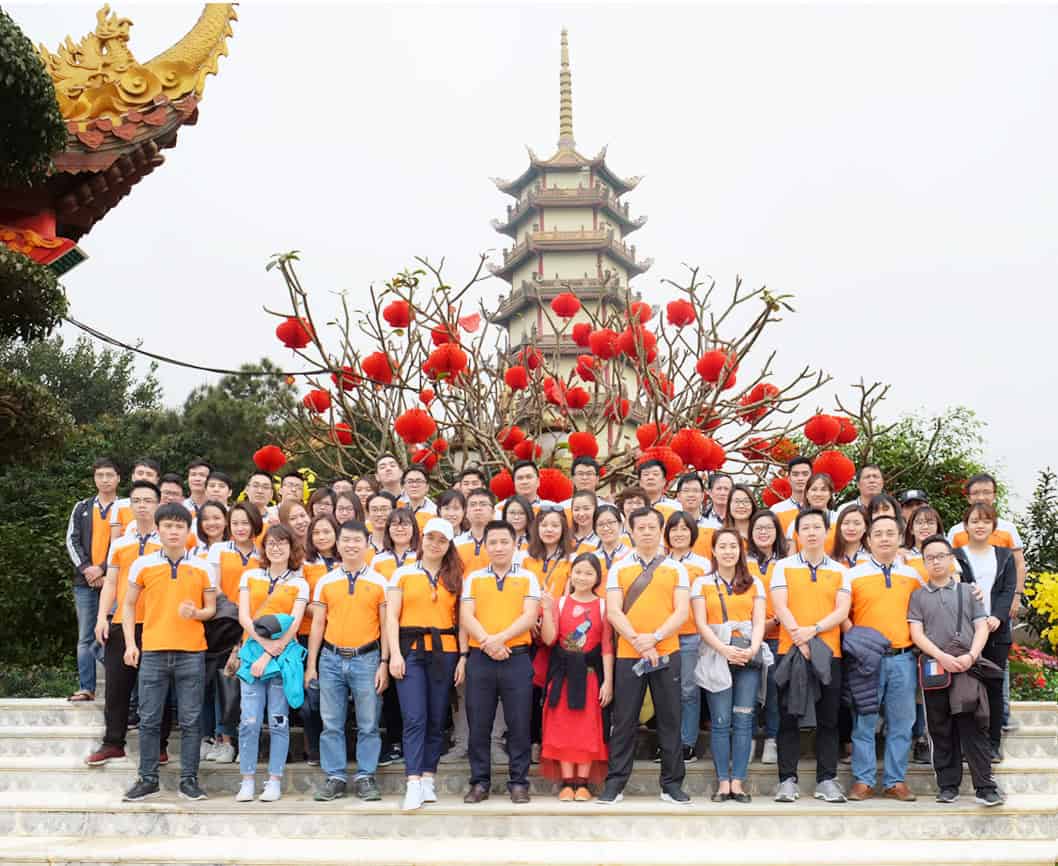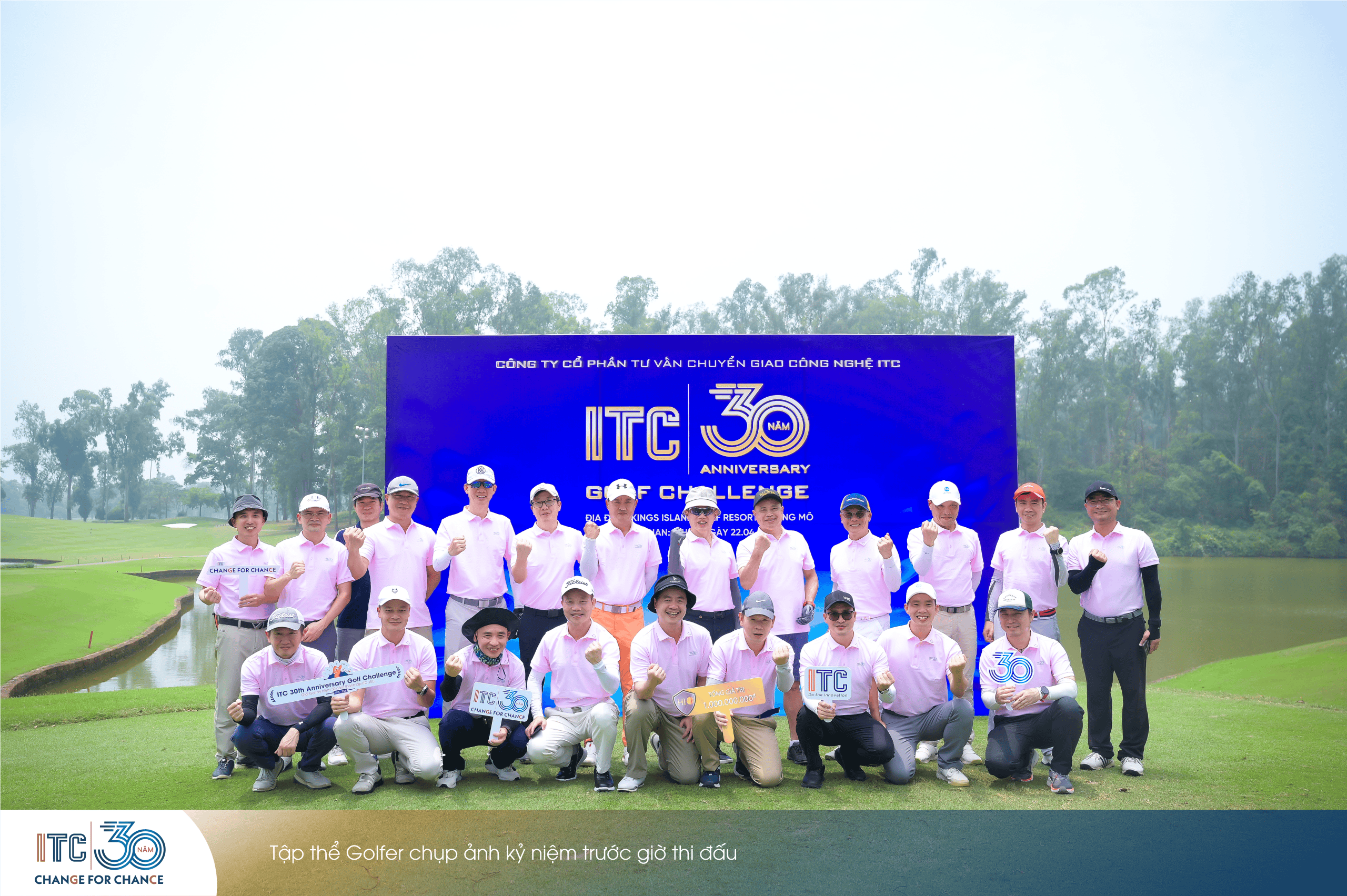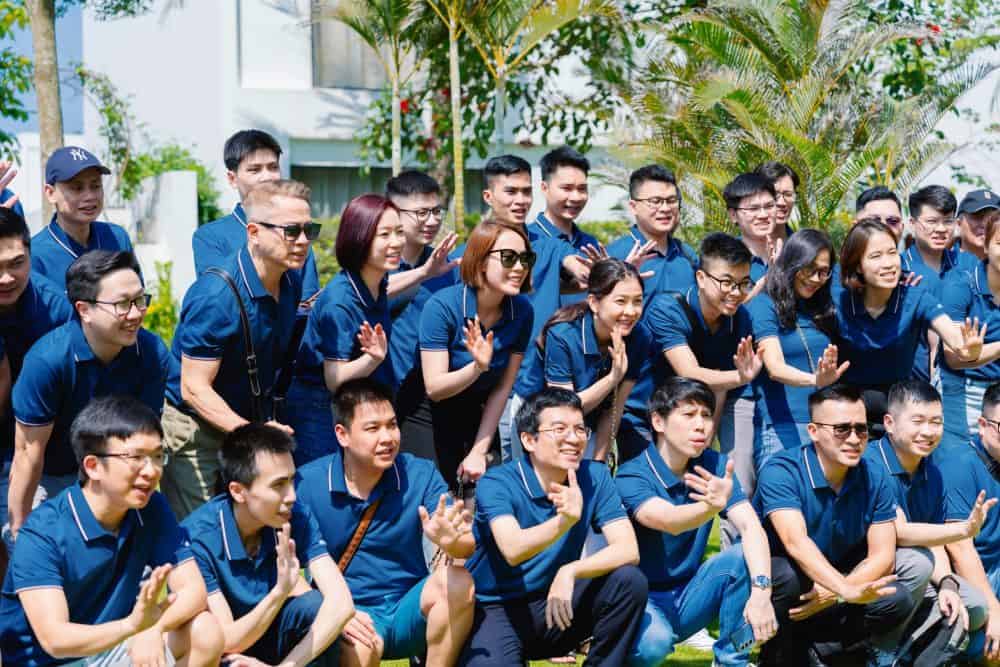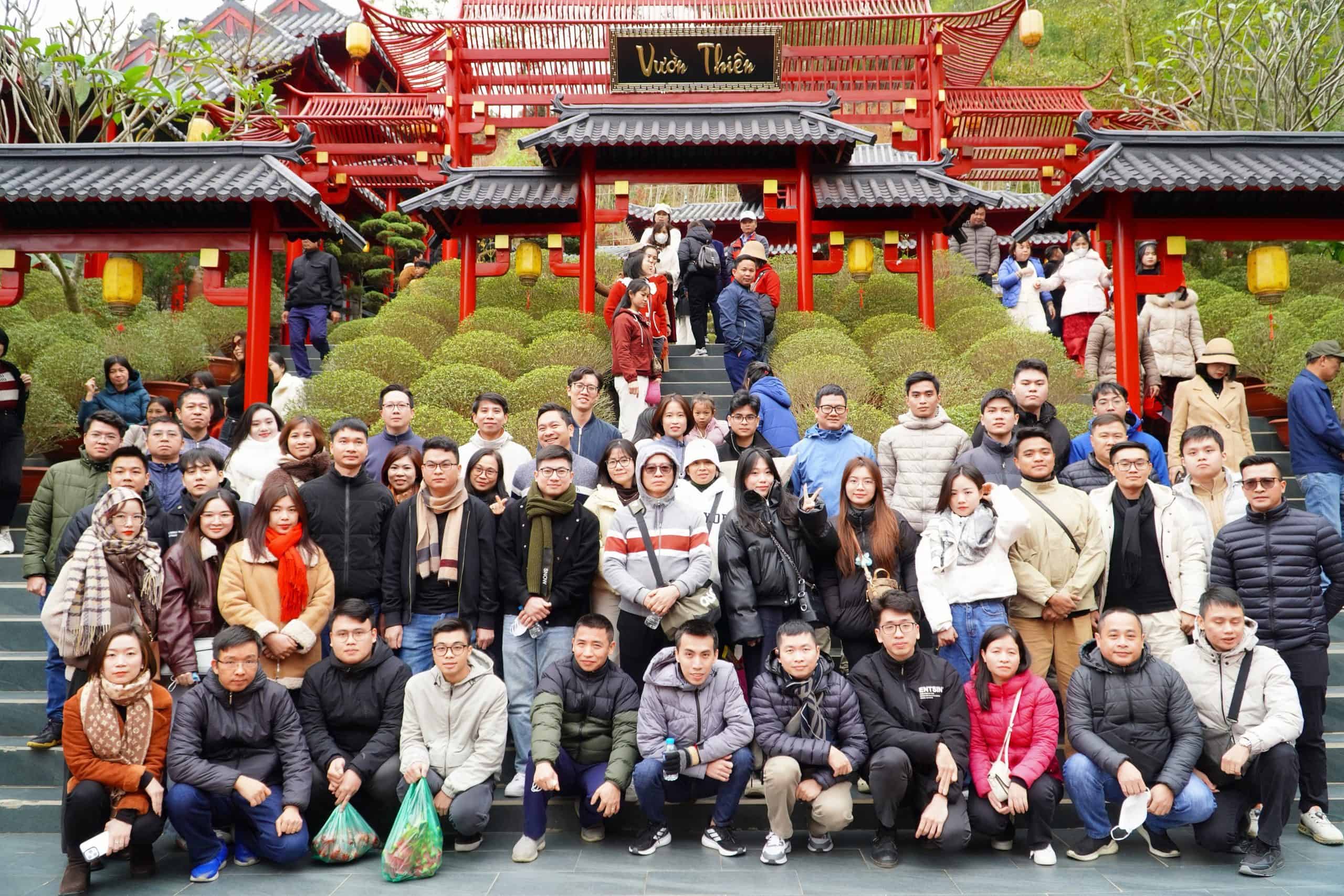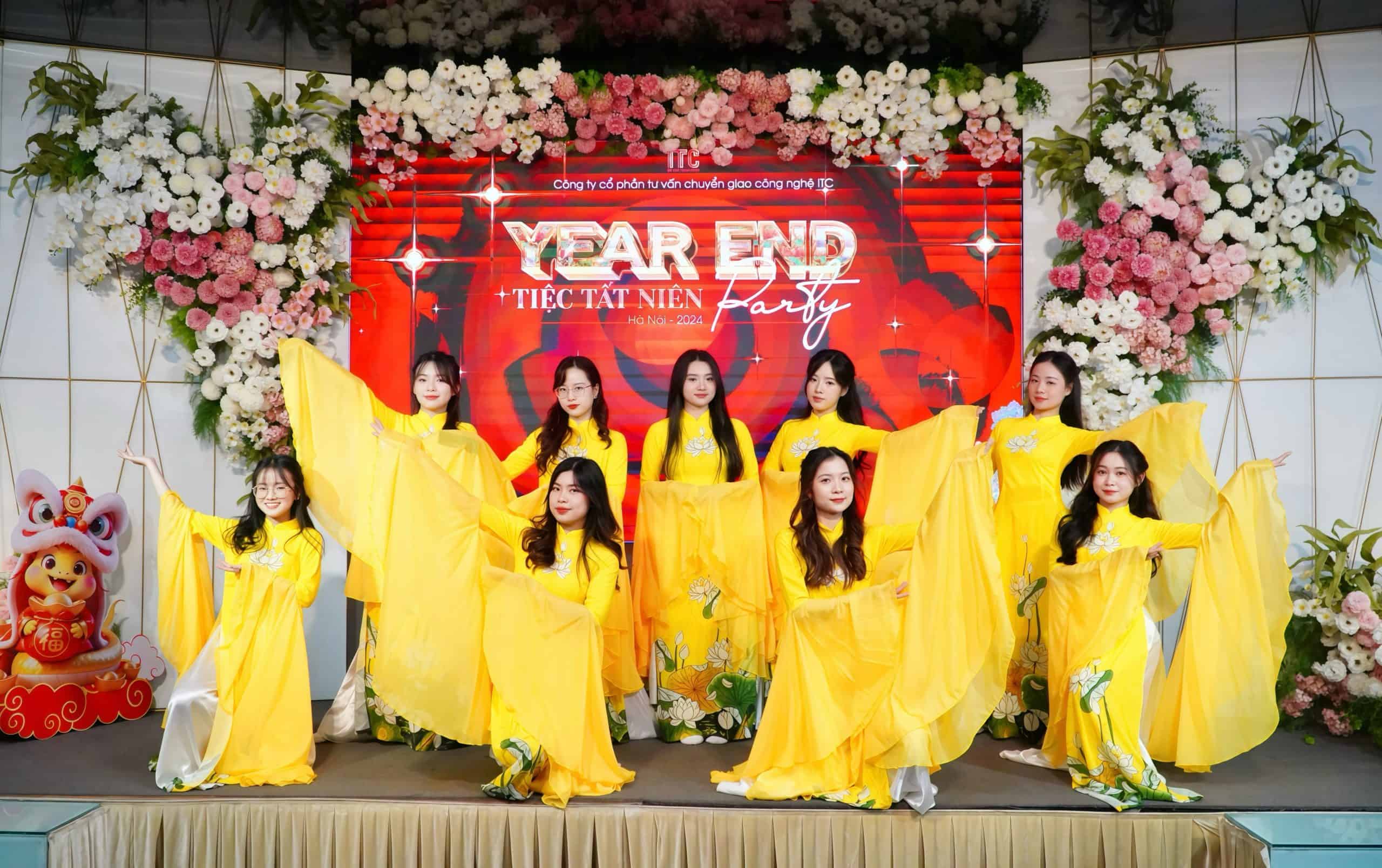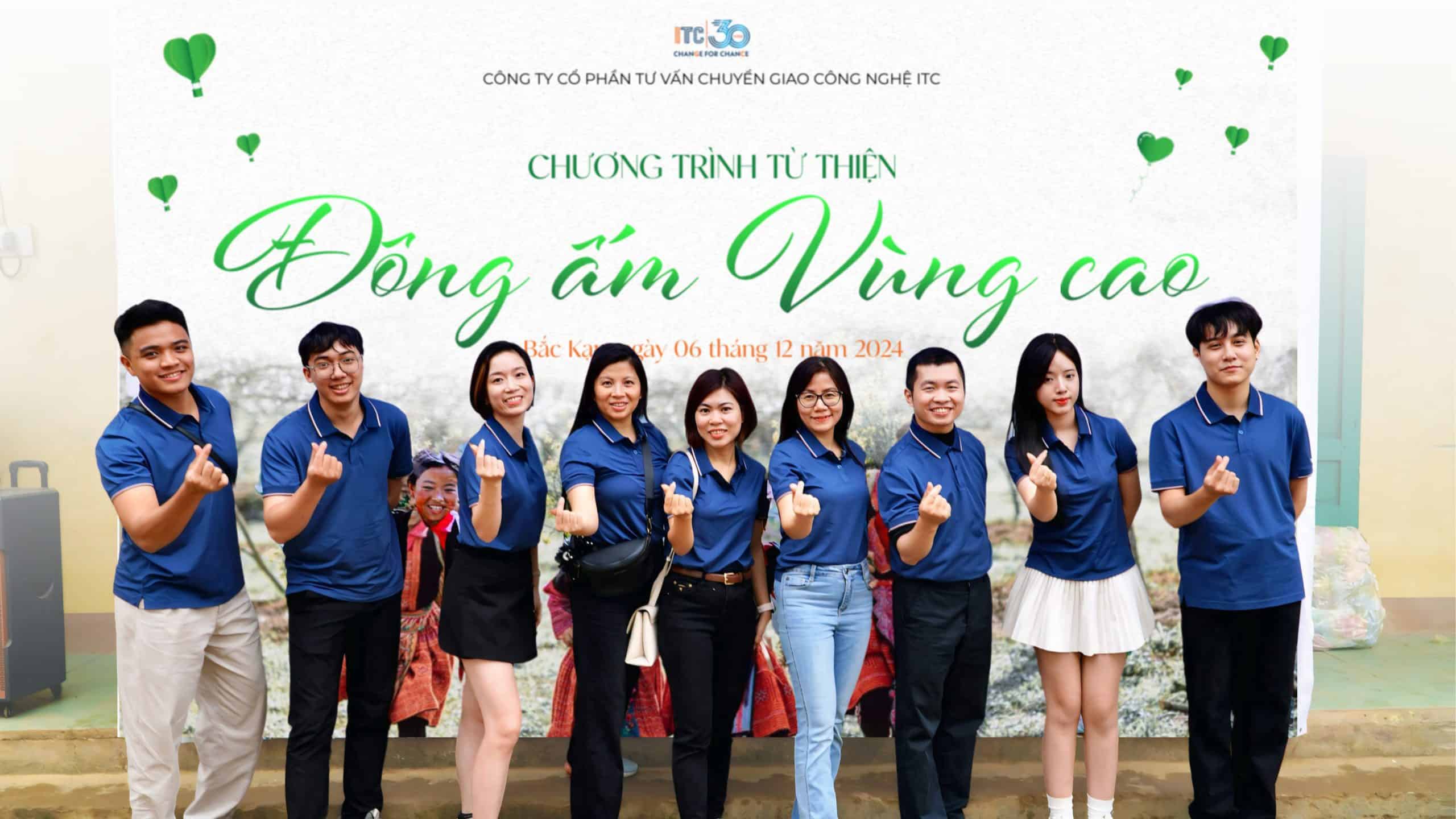Visiting temples and pagodas is one of the beautiful cultural traditions of the Vietnamese people, especially during the Lunar New Year. Joining the joyful atmosphere of the Vietnamese Tết holiday, on February 16th, 2020 (12th day of the 1st lunar month of the Year of the Pig), ITC Consulting and Technology Transfer Joint Stock Company had a spring pilgrimage with a schedule that included visits to Khai Nguyên Pagoda, Mía Pagoda, and the ancient village of Đường Lâm, located in Sơn Tây Town, Hanoi.
In the spiritual life of the Vietnamese people, temples and pagodas are sacred and respected places. Visiting pagodas in the early days of the year is not only to pray for good fortune, success, and peace of mind, but also a moment of serenity amidst square ponds, flourishing trees, and fragrant flowers all year round, creating a tranquil atmosphere for Buddhists and visitors stepping into the pagoda.
Inside the pagoda grounds, there are unique architectural structures made from solid sandstone, carved into valuable sculptures. The pagoda has a Hell Cave that reenacts the descent to hell according to the Pure Land Buddhist teachings, where people can reflect on their conscience and ethics. The Khai Nguyên Pagoda, especially during holidays and festivals, is magnificent and radiant, but still exudes an air of calmness.
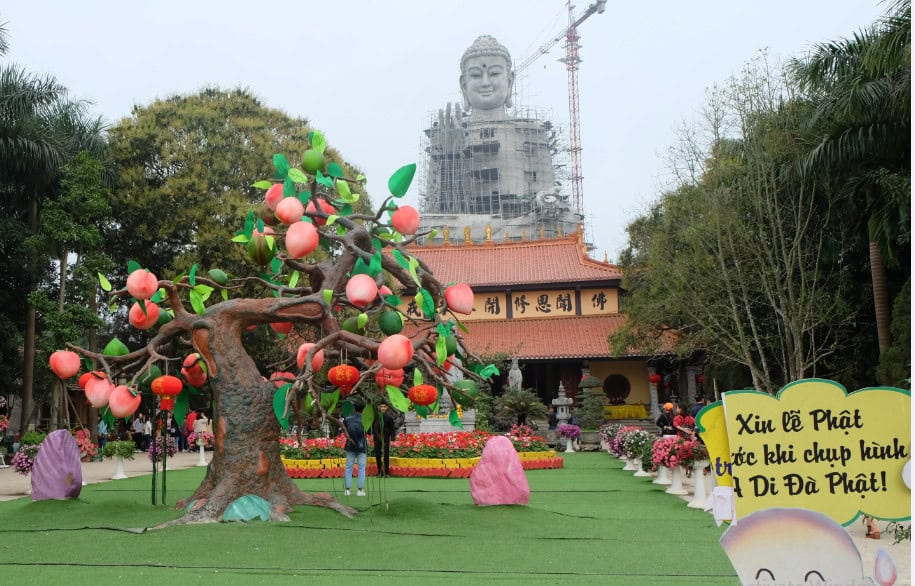
Khai Nguyên Pagoda
Leaving the ancient pagoda with many thoughts about life, the group continued their journey to the national heritage site of the ancient Vietnamese village of Đường Lâm, where the cultural traditions of the northern midland regions are preserved. Standing at the village gate shaded by trees, one’s heart seems to calm, and the scenery makes people forget the noisy life outside, returning to a peaceful place in their soul, lightened by the shade of the banyan tree – the well – the communal house.
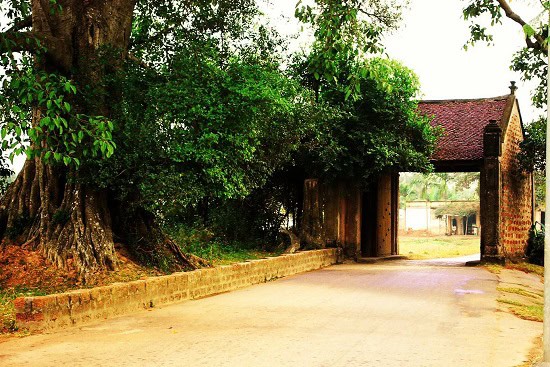
Cổng làng Mông Phụ – Làng cổ Đường Lâm
From the village gate, along the old village road to the Mía market, one encounters Mía Pagoda, where a 1745 bronze bell from the Lê dynasty and a 1846 bronze gong from the Nguyễn dynasty hang gracefully. Mía Pagoda (also known as Sùng Nghiêm Pagoda) is located in Đường Lâm Commune, Sơn Tây Town, Hanoi. In the past, this area was known as Cam Giá, with the local name Mía, hence the pagoda is commonly referred to as Mía Pagoda. It is considered one of the pagodas with the most artistic statues in Vietnam (287 statues).
Right next to the gate is a centuries-old banyan tree, with a vast canopy, thick branches, and roots stretching deep into the ground.
“Through centuries of rain and sun,
Still standing serenely guarding the Gate of Meditation.”
Outside, the bustling market is busy all year round, while inside, the atmosphere of meditation is mystical and serene, reminding us that “just a step away is a world far from worldly matters.”
At the beginning of the year, leaving behind the city dust, blending into the fresh spring air, and returning to the peaceful memories of the old countryside, the ancient houses of Đường Lâm such as those of Mr. Hà Nguyên Huyến, Mr. Nguyễn Văn Hùng, and Ms. Dương Lan, brought the group a sense of tranquility, calmness, and nostalgia. Touching the sandstone of the old houses, the cheerful sounds of birds, and the occasional crowing of roosters seem to call back to childhood. Walking along the small roads, with the faint scent of grapefruit in the air, one truly feels how peaceful life can be.

A memorable photo of the ITC Family
The spring pilgrimage came to an end, and the group returned to Hanoi, carrying with them fond memories of the old places. The spring scenery, holding hands with colleagues in the first days of the new year, made every member of ITC feel more peaceful and happy, determined to strengthen their bond and welcome a new year full of wealth, good luck, and success.

